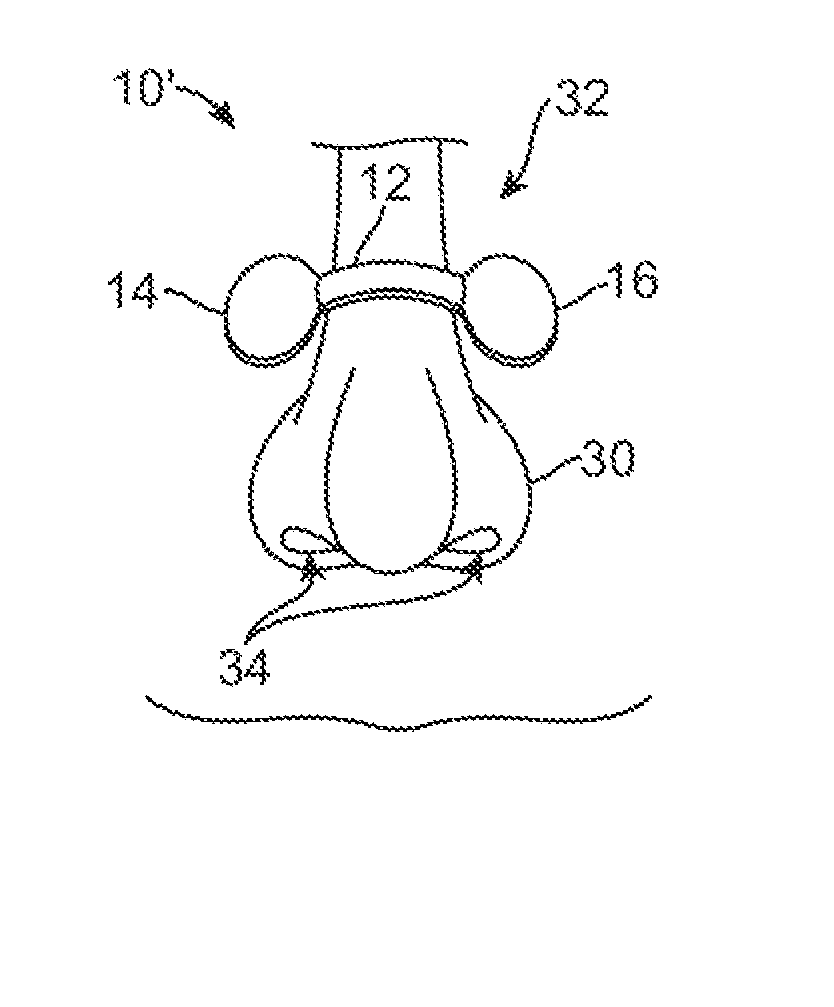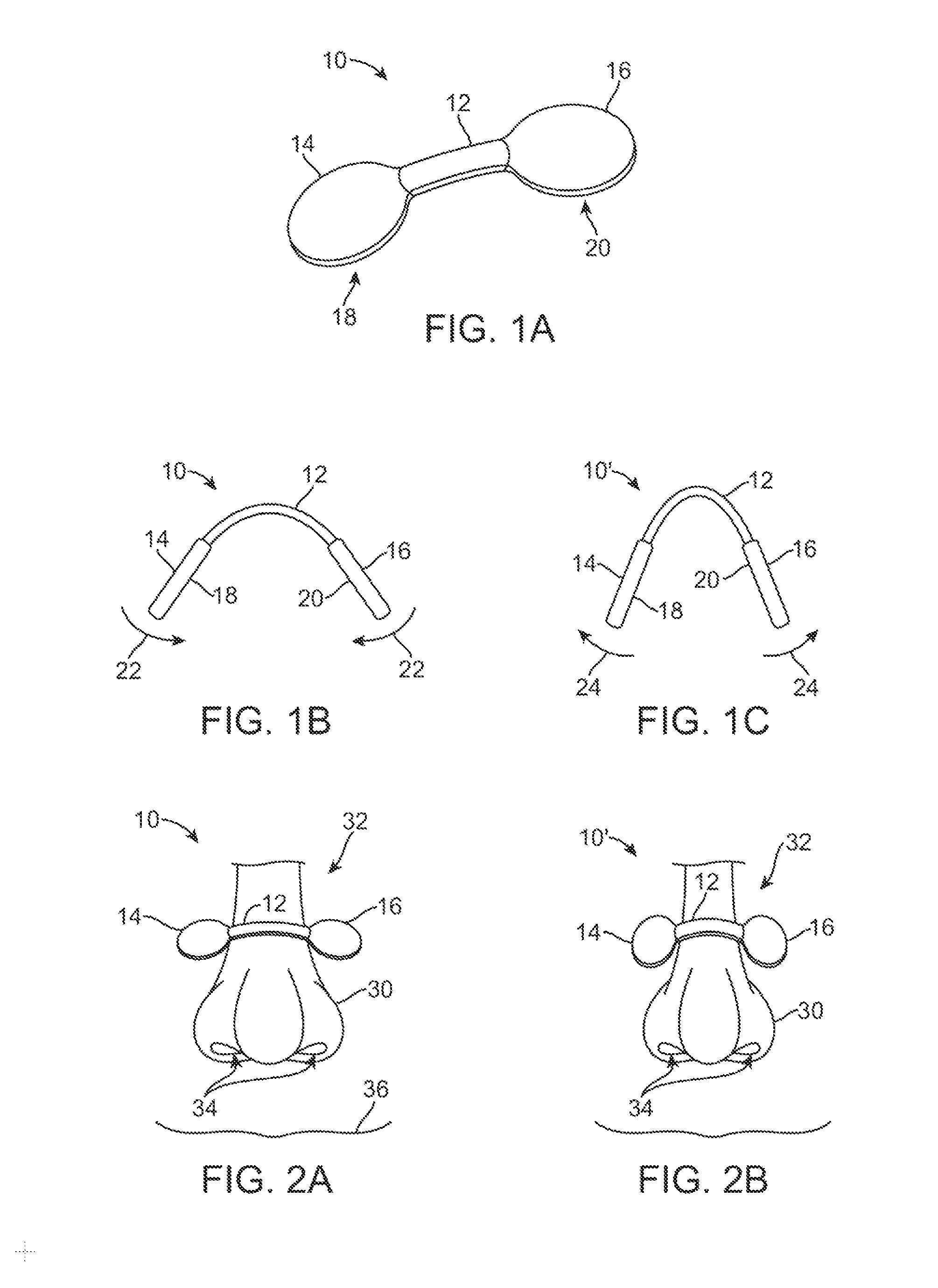Airflow restriction system
a technology of airflow restriction and patient, which is applied in the field of patient apparatus and methods for controlling airflow through nasal passages of patients, can solve the problems of user wear, many patients have difficulty in adjusting to cpap devices, and cannot be done while the patient, so as to facilitate fluid transfer and restrict the airflow through the patient's nasal passages
- Summary
- Abstract
- Description
- Claims
- Application Information
AI Technical Summary
Benefits of technology
Problems solved by technology
Method used
Image
Examples
Embodiment Construction
[0042]In treating various disorders, e.g., snoring, OSA, COPD, asthma, heart failure, etc., a device which can create expiratory positive airway pressure may be utilized which provides for patient comfort regardless of the patient's anatomical variances. Generally, such a device may be optionally disposable and may be removably secured externally over the patient's nose rather than within the nasal passages to increase patient comfort. The restriction device may be secured, e.g., via an adhesive, to the patient and actuated via any number of mechanical or electromechanical mechanisms. Moreover, the restriction device may include one or more sensors to detect the patient's respiration activity such that the device may be actuated to correspond to the patient's exhalation and squeeze or otherwise constrict the nasal passages at least partially by pressing against the exterior surface of the nose to restrict the expiratory airflow.
[0043]As shown in the perspective view of FIG. 1A, one ...
PUM
 Login to View More
Login to View More Abstract
Description
Claims
Application Information
 Login to View More
Login to View More - R&D
- Intellectual Property
- Life Sciences
- Materials
- Tech Scout
- Unparalleled Data Quality
- Higher Quality Content
- 60% Fewer Hallucinations
Browse by: Latest US Patents, China's latest patents, Technical Efficacy Thesaurus, Application Domain, Technology Topic, Popular Technical Reports.
© 2025 PatSnap. All rights reserved.Legal|Privacy policy|Modern Slavery Act Transparency Statement|Sitemap|About US| Contact US: help@patsnap.com



